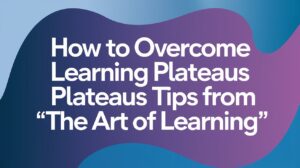In the hustle-bustle of today’s fast-moving world, people hardly get any time for looking into their own selves. Amidst jobs, families, and social circles, finding moments for peace and silence does sound impossible. On the other hand, meditation has invaluable benefits: it reduces stress levels, strengthens focus, and elevates your mood. Herein lies the necessity of learning how to fit meditation into a busy schedule. With a little creativity and some practical strategies, anyone can bring some degree of mindfulness into their day-to-day lives, even in small, manageable doses.
Why Meditation Matters?
Before covering practical ways to squeeze meditation into your day, first consider why it is worth making time for. Meditation offers numerous physical and mental health benefits that include but are not limited to:
- Reduced Stress: Meditation turns on the body’s relaxation response and lowers cortisol, which is the hormone associated with stress.
- Improved Concentration: By meditating, the brain is taught to focus on the present moment. This helps elevate productivity and attention capability.
- Emotional Balance: The state of mindfulness can provide a way for regulating one’s emotions that will help in remaining poised in very precarious situations.
- Sleep: Meditation, especially mindfulness practices in breathing, helps reduce insomnia and generally improves the quality of sleep.
- Better well-being: Regular meditation may boost life satisfaction and happiness by fostering an increase in inner peace. The bottom line? A little meditation can add up to big improvements in the quality of your life.
How to fit meditation into your day
Thinking meditation takes hours of sitting in silence? You need to change your mind, because meditation can be flexible; you really can fit it into a busy schedule without interrupting daily routines. Here’s how:
1. Start Small: The Power of 5 Minutes
You do not need to meditate for an hour to receive the benefits of doing so. In fact, it is possible to start with just 5 minutes a day and still make a difference.
- Morning Routine: Take out 5 minutes as soon as you wake up. Find a quiet spot, close your eyes, and focus your attention on your breathing. This helps set a calm and positive tone for the rest of the day.
- Before Bed: Conclude your day with a short meditation to let go of the day’s stress and wind down. Follow a guided sleep meditation for sounder sleep.
2. Make waiting count
We all have those moments of waiting throughout the day, while in line, in traffic, or before a meeting. Why not turn these idle minutes into a mindfulness opportunity?
- Breathing focus: While waiting, one can take deep breaths and focus on the pattern of breathing. This would calm the mind and also keep you on the ground.
- Body Scan Meditation: You mentally scan your body starting from the toes up, noticing tension and relaxing them.
3. Tap Technology
Countless apps that exist lead busy persons through brief meditation exercises; the apps include:
- Headspace: Offers guided, beginner-friendly meditations and mindfulness programs, ranging from 3-minute to 30-minute sessions.
- Calm: They contain some really soothing sleep soundscapes, fast meditation, and daily mindfulness features.
- Insight Timer: Houses a huge free library of guided meditations, including short ones for the busy people in life.
4. Meditate While Commuting
Yet, if you are using public transport or having a car ride where you will not need to pay active attention, then your commute can also be that prime time for meditation.
- Guided Audio: Plug in your earphones and listen to a guided meditation during the train or bus ride.
- Mindful driving: If one drives, mindfulness could be achieved by paying more attention to the surroundings and driving as such. Deep, full breaths, and awareness of the body in the car may become a soothing practice.

5. Meditation Can Be Combined With Routine Activities
You don’t necessarily have to stop everything and meditate. One of the great ways to fit mindfulness into your day is by coupling it with routine tasks.
- Mindful Eating: Focus on each bite, savor the flavors, and notice the texture of your food. Eating mindfully can also help digestion and make for a healthier eating habit.
- Mindful walking: Pay attention to all your walks or running errands with the sense of your feet touching the ground, sounds around, and your breath.
- Shower meditation: Let your shower be the mini meditation session. Focus on the water’s feel upon your skin, the sound of the water, and warmth.
6. Set Meditation as You Would with Any Other Appointment
Live according to the dictates of your calendar? Then why not schedule meditation like you would any other activity? Take out 10-15 minutes in your lunchtime or evening and write it down ahead of time. You’ll be more likely to keep your commitment and proceed with a consistent pattern of meditation.
- Tip: Consider anchoring it to another daily habit. Example: Meditate right after brushing teeth or before opening your emails in the morning.
7. Use Breathing Techniques Anywhere
One can always count on simple breathing exercises to center oneself. These are ones that require no equipment or set-up and can be done anywhere.
- 4-7-8 Breathing: Inhale for 4 seconds, hold for 7 seconds, exhale for 8 seconds. It actually calms the nervous system and allows one to refocus.
- Box Breathing: Inhale for 4 counts, hold for 4, exhale for 4, and hold the exhale for 4 counts. Repeat a couple of cycles to let the mind get relaxed.
8. Practice Gratitude Meditation
Gratitude meditation is a good way to round off each day on a positive note. Take a few minutes every night just before bed to think of three things you are grateful for. This small act can turn your mind away from stress into appreciation, which equals better sleep and happiness.
Meditation-Friendly Books to Deepen Your Practice
Though apps and short meditations help give that quick fix, reading books on meditation can help deepen understanding and inspire commitment for the long run. Here are some great recommendations for getting started:
1. The Miracle of Mindfulness by Thich Nhat Hanh
This classic book by a famous Vietnamese Buddhist monk introduces readers to the practice of mindfulness in everyday life. The book offers simple techniques and profound insights to help you stay present no matter how busy you are.
2. Wherever You Go, There You Are by Jon Kabat-Zinn
A practical guide that de-mystifies meditation and opens it up for all. Kabat-Zinn’s emphasis on living mindfully in the present moment tends to be very helpful for those who have very jammed schedules.
3. The Headspace Guide to Meditation and Mindfulness by Andy Puddicombe
Being the co-founder of the Headspace app, the book is a friendly walkthrough for meditation beginners. It includes practical tips for fitting mindfulness into a busy life.
4. 10% Happier by Dan Harris
This is a humorous and candidly written memoir in which Dan Harris, a well-known journalist, looked into how meditation can help him get through the stress and anxiousness of his high-pressure career. It is perfect for those people who still remain a bit skeptical about meditation and are open to ways they can improve their mental well-being.
Final Thoughts
Meditation doesn’t have to be excessively time-consuming or even all that complicated. Within even a very busy life, there are many opportunities to practice mindfulness and garner advantages from meditation. Start small, be consistent, and make use of the tools available to you-whether those tools be technology, books, or quiet moments of stillness within your daily routines.
Keep in mind that this is not about adding more to an already full schedule but knitting mindfulness into your existing day so that you can feel more centered and focused without the busyness overtaking your life.
By accepting even the shortest meditation practice, you are able to turn not only your day around but also the general condition of your body. Give it a shot, and the mind and body will surely thank you!






